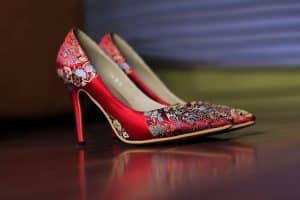Textile Traditions: Global Weaving Techniques

Textile traditions have been an integral part of human history, with weaving techniques being passed down through generations. The art of weaving has not only been essential for creating everyday textiles but has also played a significant role in shaping cultures and societies. From the colorful Andean textiles of Peru to the intricate patterns of Indian sarees, global weaving techniques have a rich and diverse heritage. In this article, we will dive into the fascinating world of global weaving traditions and explore the unique techniques that have stood the test of time.
The Art of Weaving
Weaving is the process of interlacing two sets of yarns, known as the warp and the weft, to create a fabric. While the basic principle of weaving remains the same, techniques and materials vary from region to region, resulting in distinctive and culturally significant textiles. Weaving has been practiced for thousands of years, with evidence of early textile production found in ancient civilizations such as Egypt and Mesopotamia.
One of the earliest global weaving traditions is that of the Native American culture. The Navajo tribe in North America is well-known for their intricate and colorful hand-woven blankets, rugs, and clothing. They use a vertical loom, where the warp threads are attached to a frame, and the weft threads are woven over and under the warp threads. Navajo textiles often feature vibrant designs and symbols, representing their connection to nature and the spirit world.
The Andean Textiles of Peru
In Peru, the art of weaving has a long and rich history, dating back to the Inca Empire. The traditional weaving techniques of the Andean people, such as the Quechua and Aymara, have been passed down from generation to generation and are still practiced today. One of the most famous techniques is backstrap weaving, where the weaver attaches one end of the loom to a stationary object and the other end around their waist. This method allows for intricate patterns and vibrant colors in the finished product.
The colors and designs of Andean textiles have cultural significance, with each community having its distinct patterns and motifs. For example, the Chinchero community is known for their vibrant and bold geometric designs, while the Amaru community is renowned for their intricate floral patterns.
The Art of Japanese Weaving
Japanese weaving techniques are highly revered and are often seen as a form of art. The Japanese have been weaving for centuries, with the earliest evidence of textile production dating back to the Jomon period (14,000 BC – 300 BC). The most famous Japanese weaving technique is Nishijin weaving, which originated in Kyoto during the Heian period (794-1185 AD). Nishijin textiles are known for their intricate brocade patterns, often featuring gold and silver threads, and are used to create traditional garments such as kimonos.
Other notable Japanese weaving techniques include Shibori, a dye-resist technique using different binding and dying methods to create unique patterns, and Sashiko, a form of decorative stitching often used to reinforce or mend garments.
The Impact of Global Weaving Techniques
The global exchange of weaving techniques has had a significant impact on the textile industry, influencing both design and production. In the 16th century, the Spanish introduced the treadle loom to the Indigenous peoples of South America, which allowed for faster and more efficient weaving. This resulted in the production of larger and more intricate textiles, such as the iconic Peruvian poncho.
In recent years, the rise of global trade has led to the mass production of textiles, often resulting in the loss of traditional weaving techniques. However, there has also been a movement to preserve these ancient techniques and promote fair trade practices. Organizations such as the World Fair Trade Organization and the Ethical Fashion Forum are working towards creating a more sustainable and ethical fashion industry, which includes preserving traditional weaving techniques and supporting the artisans who practice them.
In Conclusion
In today’s fast-paced world, global weaving traditions continue to thrive, providing a rich cultural heritage and a source of income for many communities. The diversity and uniqueness of each technique demonstrate how weaving is much more than just a practical means of creating textiles; it is a form of art, identity, and tradition. So the next time you see a hand-woven textile, remember the centuries of skill and history woven into its fabric.









